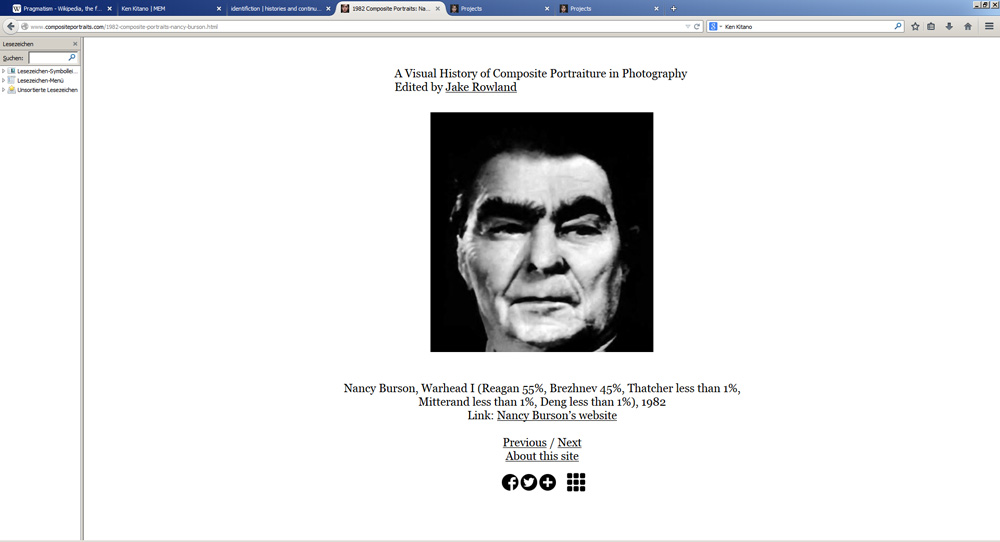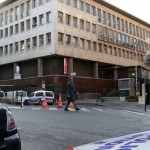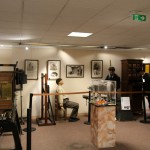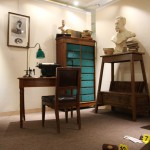I came across an interesting webpage run by the New York based artist Jake Rowland, who also works with the composite technique. The website provides a brief „Visual History of Composite Portraiture in Photography“ in chronological order starting with the compositions of Francis Galton, but also including artworks from the twentieth and twenty-first century.
Archiv für den Monat: Januar 2015
Bertillon Exhibited
Research trip to the „Musée de la Préfecture de Police“ in Paris/France, January 2015
The museum of the police prefecture of Paris is located in the centre of town. It is only a five minute walk from the “Ile de la Cité”, the central court of Paris and the historical Prefecture where in nineteenth century Alphonse Bertillon resided in the upper stories as the head of the department of judiciary identification. The museum is however not housed equally grandiose, but in the third storey of a post-war concrete building. Already in the forecourt a sombre looking police officer blocks my way, the secret parole “museum” changes his expression and he leads me through a door. Here again, in a dark waiting room, ripe with the smell of the self-service coffee machine, faded posters of police announcements and wanted posters, I am lost. Another obstacle, this time a desk manned by a team of officers, has to be overcome before I am granted access to the elevator.
Right opposite of the entrance door to the museum there’s a section on the “Scientific Police”, mainly on Bertillon’s work. An accumulation of framed photographs and texts as well as objects introduces the development of identification and scientific police work. Among these are reproductions of historical photographs, of the process of taking anthropometric measurements, the archive of the Bertillonage records, tables for the portrait parlé, as well as crime scene photographs and reproductions of fingerprints. A huge enlarger takes up much of the space, but leaves room for a staged photo shooting – wooden posing chair and historical camera. Two puppets are representing a seated suspect under the gaze of a photographer whose face is clearly modelled on Bertillon – here he is the “Father of Scientific Detection” standing right in front of me, but slightly stiff. Another puppet operates a small wooden ordering cabinet for the Bertillonage identification cards, as it was used in the introductory phase of the new technique of biometric identification. By the beginning of the twentieth century, the records filled endless rows of shelves in the former police archive and a team of clerks were employed to order and retrieve the identification cards. Some of the cards and judiciary photographs are now kept in the archive of the Police Prefecture that I could visit on my last trip to Paris. In a corner a suitcase of instruments for taking the eleven anthropometric measurements of the Bertillonage rests in a vitrine.
When I arrive at the museum for a second time and ask for an appointment with a curator, the staff leads me into a small office. Even though my earlier message apparently didn’t reach her the woman greets me enthusiastically, as if she’d expected me. The room is overflowing with papers, boxes, objects – like tidal waves this ocean crashes onto her table. Bertillon Exhibited weiterlesen






